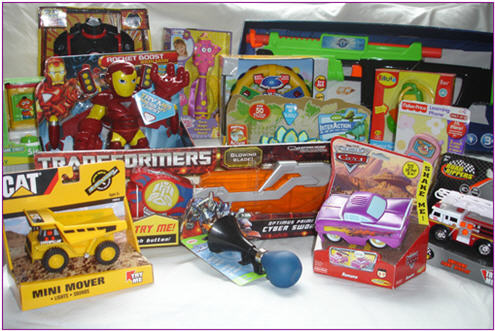Every year, the Sight & Hearing Association and researchers from the University of Minnesota test a variety of toys — taken right off the shelves of local toy stores — for potentially dangerous noise levels just in time for the busiest toy-buying season of the year.
This year's top two offenders, Bell Riderz Block Blaster and cars Shake 'N Go Ramone, blared at 129.2 and 119.5 decibels (dB), respectively. According to National Institute of Occupational Health and Safety (NIOSH) standards, that level leads to a risk of hearing damage almost instantly.

"I was definitely surprised by these results," said Heather Nelson, M.D., an otolaryngologist and resident at the University of Minnesota's department of otolaryngology who tested the toys. "Some of these toys could be dangerous to hearing if they are held close to the child's ear and played with for an extended period of time."
In fact, sounds that are 85 dB or louder can permanently damage your ears. The louder the sound, the less time it takes to cause damage. For example, a sound at 85 dB may take as long as eight hours to cause permanent damage, while a sound at 100 dB can start damaging hair cells after only 15 minutes of listening. According to NIOSH, part of the Centers for Disease Control, the permissible exposure time (the amount of time you should listen) is cut in half with every 3 decibels over 85 dB.
This study is important for several reasons:
- Noise-induced hearing loss is cumulative. It doesn't typically happen from one event;it gradually happens over time. That's why it's important to start protecting hearing at a young age.
- Compliance with noise level standards on the part of toy manufacturers is completely voluntary. Because of that, you must be an advocate for your own child or the children for which you are buying toys.
- Awareness. This is the 13th year the Sight & Hearing Association has studied the noise levels of toys. Throughout the years, more parents have become aware of the dangers of loud toys.
- Listen to a toy before you buy it. If it sounds loud to you, it's too loud for your child.
- Report a loud toy. Call the Consumer Product Safety Commission at 800/638-2772 or the Sight & Hearing Association at 800/992-0424, or contact us by e-mail at ReportAToy@sightandhearing.org.
- Put masking or packing tape over the speaker on the toy. This will help reduce the volume.
- Buy toys with volume controls.

